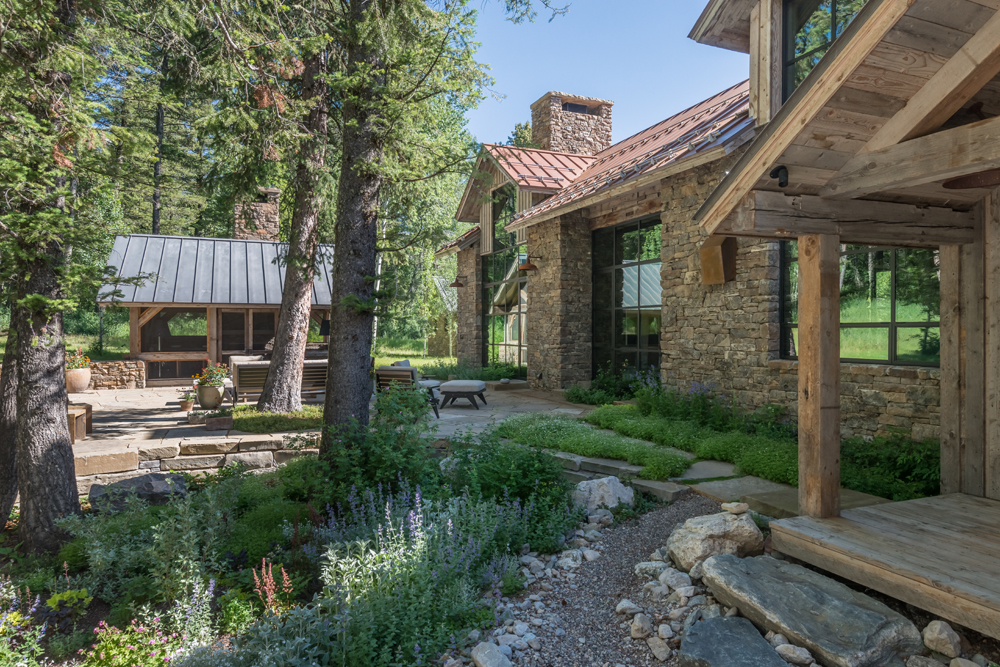Jim Verdone landed in Jackson, Wyo. in 1977, fresh out of N.C. State’s College of Design.
He was the only practicing landscape architect in a town where the concept was neither understood nor valued.
“Back then, it was mostly civil engineers doing the site planning,” he says. “I saw the opportunity – and a need – for a much more sensitive approach.”
He eventually forged a relationship with JLF Architects out of Bozeman, Mont. – and has been collaborating with them for 35 years now.
It’s a thoughtful, mutually rewarding relationship. “They bring us in at the very beginning, and we often influence their architecture – we appreciate that and it shows in our work,” he says. “I believe in what they’re trying to do with their buildings – to put them in the environment and make them look like they’ve been there for a long, long time,” he says.
As a design/build firm, JLF’s work is driven by the design and not by the builder. “In the normal process, the architect works with the client and sets up plans and puts it out to bid and then the lines are drawn and it compromises the design,” he says. “The contractors stick to their bid and change orders become problematic.”
But if, during the design/build process, every professional works together to adapt and adjust as they go along, the outcome is less confrontational. “You’re understanding the goals and objectives from the 50,000-foot view, you do the details, and come back and look at the 50,000-foot view again,” he says. “You have a baseline and people are not digging their heels in – and are making intelligent decisions.”
With design/build, they can also drill down deeper on site. “We’re able to challenge the contractor a little more, and they appreciate it at the end of the day,” he says. “There are so many good craftsmen in the construction world now – and they get a voice this way. It’s great.”
His nine-person firm usually starts out with JLF’s bubble diagrams that indicate the architects’ interior spaces – and then add their own to them. They look where the walls and glass are, and how to bring the landscape up to them. “Then, you look at the native landscape – and at the hardscape as a viewing platform for that natural landscape,” he says.
Water features – natural and manmade – play a primary role in their designs, since the Jackson area is dominated by spring creeks and rivers. “People gravitate toward water,” he says. “We respect the cultural heritage of the Western landscape and what ranchers employed over the years and incorporated it into our landscapes – it started out as one thing and became something else.”
They adhere to a landscape philosophy that Verdone calls calculated restraint. “It’s tempering your design,” he says. “Sometimes as a designer you inherently feel like you have to make a statement – that you’ve really dressed a project up.”
They could have adhered to that conventional path, dispatching swaths of flowers and tree plantings, but deliberately to conform to the natural world. “We want to make timeless projects fit into the Western landscape,” he says. “We had to go out and work with some growers for certain plant materials for some broad sweeps, and to fit our clients’ needs.”
The big idea is to come up with a plan, second-guess themselves on it and temper it down. “It’s not to make a statement but to achieve an end,” he says. “And people will not know we’ve been there – we take the edge off this or that, and make things settle into the landscape a little better.”
Sure, he went out West and grew up with the country – but his success has been borne from an abiding respect for that country.
For more, go here.
[slideshow id=2358]

